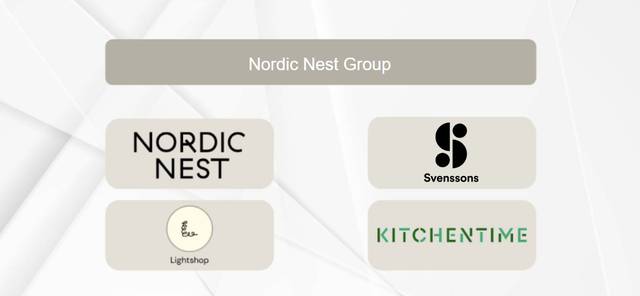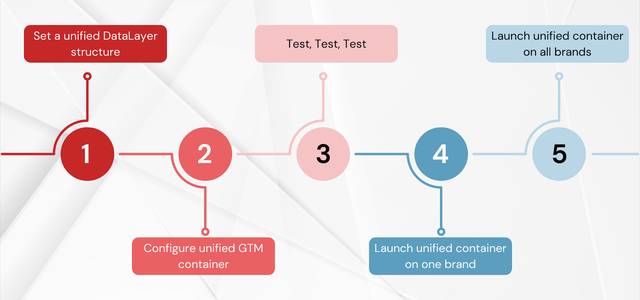

Efficient data management is essential for businesses to remain competitive in today's fast-paced digital world. In an environment where technology and consumer expectations are constantly evolving, staying ahead requires businesses to quickly adapt and make informed decisions based on accurate data. Nordic Nest Group, a segment within the Bygghemma Group, recognized the need to optimize their tracking systems to improve data accuracy and operational efficiency. This case explores how Conversionista helped Nordic Nest Group to successfully transition to a unified Google Tag Manager container and integrate it with Google Analytics 4 (GA4), marketing tools, and other third-party solutions. By overcoming significant challenges, they achieved outstanding results, ensuring they remain agile and responsive in a rapidly changing market.
Nordic Nest Group is a segment within the Bygghemma Group, comprising four distinct brands: Nordic Nest, Svenssons, KitchenTime, and Lightshop. This segment caters to home decor enthusiasts by offering a unique range of affordable premium products in Scandinavian design.

The client faced several challenges due to having separate Google Tag Manager (GTM) containers for each brand:
The challenges faced included inconsistent data collection, which hindered performance comparison across brands, and increased time and effort for setup and maintenance, as changes had to be made individually for each brand container. Reporting was complicated due to multiple containers with distinct tracking setups, leading to data errors and inconsistencies. Additionally, higher costs arose from duplicate resources. These issues highlighted the necessity for a unified GTM container to standardize tracking, reduce duplication, minimize errors, achieve cost savings, enable data comparison and insights between brands, and ensure scalability for future growth.

Conversionista executed the implementation through five essential steps:
We began by selecting a main site with a solid tracking foundation. We then configured the dataLayer structure on this site to be applicable across all brands. Our team identified any corner cases requiring customized tracking and tailored the tracking with specific parameters or events to provide the most insightful data for each brand.
We set up a single GTM container to manage all brands within the unified setup. A robust variable structure was used to identify the brand associated with the data. This variable was applied across all tags, ensuring data was correctly routed to each brand's GA4 property. The same logic was applied to marketing tags and other third-party tools. This allowed us to use a single GTM container with one set of tags.
Thorough testing was crucial. We ensured everything worked as expected before releasing the unified container on the first site.
Once testing was complete and we were confident in the setup, we launched the unified container on the main site. We monitored data collection in GA4 and informed other parts of the organization to watch for any errors in marketing-related areas connected to GTM or other third-party tools like ContentSquare and Hotjar.
After successful testing and verification on the main site, we seamlessly launched across the remaining brands. With consistent dataLayer structures, tags, and other elements, everything ran smoothly. We remained vigilant for potential issues and kept relevant departments informed to monitor data in GA4.

By implementing a unified tracking system, Nordic Nest Group achieved several key benefits:
The transition to a unified GTM container has significantly improved the operational efficiency and data accuracy for Nordic Nest Group. By consolidating their tracking systems, they have not only reduced costs and streamlined processes but also enhanced their ability to make data-driven decisions. This strategic move positions them well for future growth, ensuring that they can continue to deliver exceptional experiences to their customers across all brands.
Thanks to our unified tracking initiative with Conversionista!, holistic analysis and data-driven decision making for Nordic Nest Group have become a smooth process. Thanks to the detailed documentation, we've been able to work independently immediately upon project delivery. Our tracking setup now offers good preconditions for introducing additional brands, optimizes our BigQuery data handling, enables efficiency and cost optimization.
Robin Ålander, Site Optimization Lead at Nordic Nest Group
Ready to accelerate your digital growth? Add your details here or email us at hej[a]conversionista.se and we’ll get back to you.
